Figure out Angkor Wat tour guide price with Rain Angkor Tour and essential tips for hiring...
Top Temples of Angkor Wat : Must See Temples
Discover everything you need to know about the Temple of Angkor Wat—Cambodia’s most famous attraction. Learn its history, architecture, visiting tips, and best times to go.
Visiting the Temples of Angkor
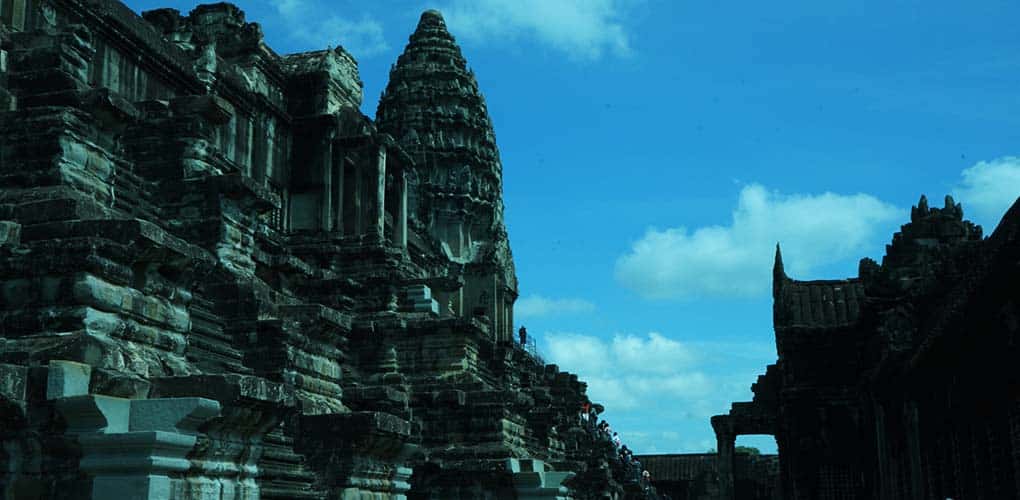
Visiting the temples at Angkor Wat is an unforgettable experience that transports you back in time to the grandeur of the Khmer Empire. The temples of Angkor Wat are not only a UNESCO World Heritage site, but they are also considered some of the world’s best Angkor temples. As you explore the intricate carvings and towering spires, you will find yourself captivated by the stunning architecture and historical significance. Bas-reliefs adorn the walls of the Angkor Wat temple, narrating epic tales, making it a must-visit on any Angkor Wat temple list.
Beyond the main complex, the best Angkor Wat temples reveal the rich tapestry of Cambodia’s heritage. The temples in Angkor offer a diverse array of styles and stories, each contributing to the allure of this ancient site. From the enchanting ruins of Ta Prohm to the majestic Bayon Temple, the Cambodian temples in the Angkor region are a treasure trove for history enthusiasts and travelers alike.
Methodology: Analyzing Tourist Statistics

To identify the top 10 least visited temples in Angkor, we analyzed tourist footfall data, accessibility, and the popularity of each temple within guided tours. Data sources included visitor logs from the Angkor Enterprise , surveys from my personal experiences and my colleagues.
1. Banteay Samre
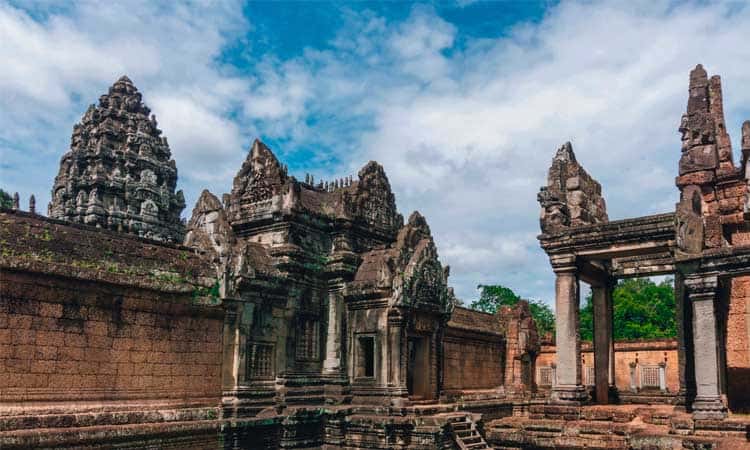
Overview: Banteay Samre is a large, yet often overlooked temple located east of Angkor Wat. King Suryavarman II, who also built Angkor Wat, built it in the early 12th century.
Significance: The temple, likely dedicated to Vishnu, exhibits architecture reminiscent of the grand design of Angkor Wat. Its surrounding walls and moat make it one of the best-preserved structures in the Angkor complex.
Unique Features: Banteay Samre boasts intricate bas reliefs and stunning, well-preserved carvings of mythological scenes, making it an excellent spot for photography without the usual crowds.
2. Bakong
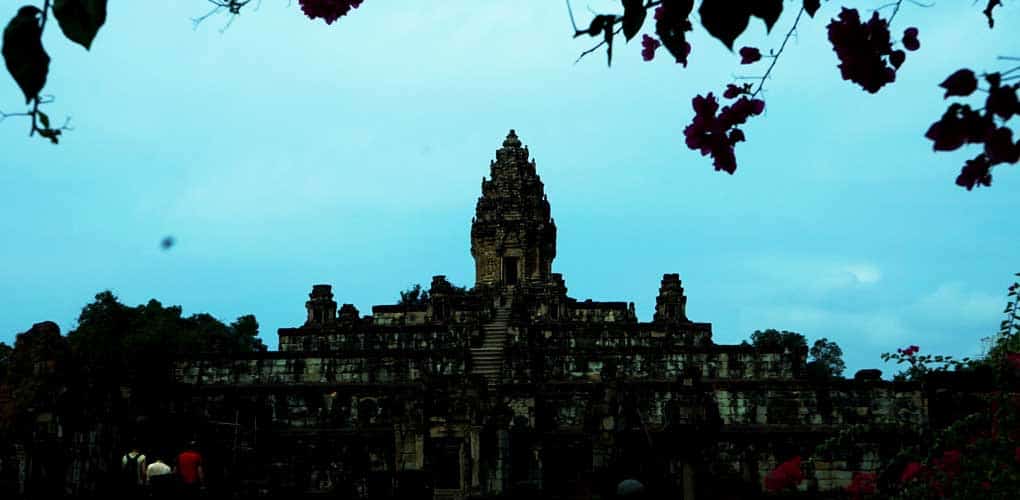
Overview: As one of the earliest mountain temples in Angkor, Bakong holds a significant place in Khmer history. King Indravarman I constructed Bakong in the 9th century, making it a part of the Roluos Group that predates Angkor Wat by centuries.
Significance: Bakong is one of the first temples to use sandstone as a primary building material, setting a precedent for future temples, including Angkor Wat.
Small sanctuaries surround the temple’s tiered, pyramid-like structure, reflecting the grandeur of early Khmer architecture. The quiet atmosphere at Bakong makes it a serene spot for reflection and exploration.
Planning to visit Bakong? Learn more Bakong temple guide in Siem Reap ,Cambodia.
3. Koh Ker

Overview: Koh Ker, a jungle-clad former Khmer city (928-944 AD), has 30 temples.
Significance: This site displays a distinctive Khmer artistic style and ambitious construction. Remoteness preserved big Shiva lingas and its original layout. 23 September, 2023, UNESCO acknowledged it.
Unique Features: Koh Ker’s most prominent feature is the 36-meter Prasat Prang, a seven-tiered linear step pyramid. Large Koh Ker-style stone sculptures and blocks are also on site. Major barays show extensive water management.
4. Preah Vihear
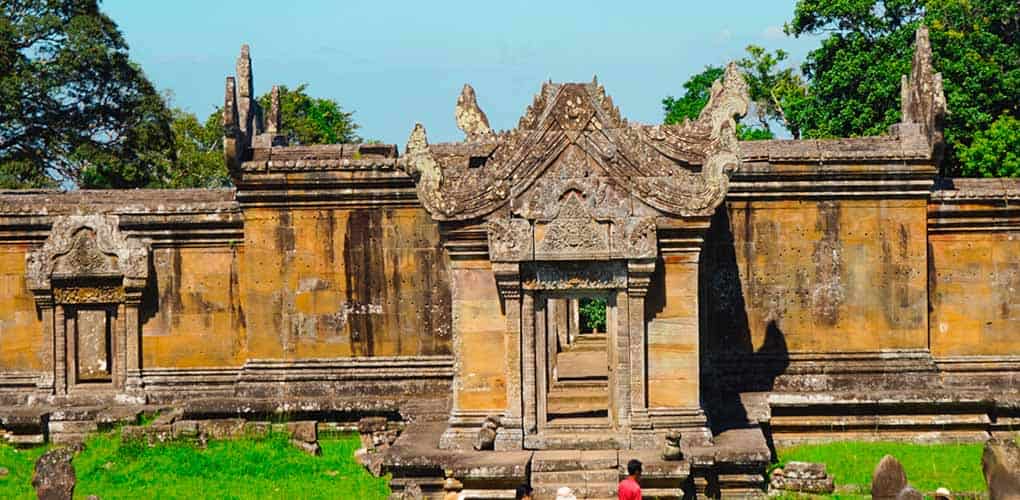
Overview: Preah Vihear Temple’s Dangrek Mountain position offers stunning vistas. This large north-south network of sanctuaries and pavilions spans a significant distance.
Significant: Beyond its architectural splendor and elaborate Shiva carvings, Preah Vihear is important to Cambodia and Thailand’s culture and history. Its strategic and symbolic cliffside location symbolized a sacred link between earth and heaven.
Unique Features: The temple’s linear layout adapts to the natural terrain and guides visitors along a processional journey to breathtaking views. This layout contrasts with other prominent Angkorian temples’ concentric layouts.
Planning to visit Preah Vihear? Learn more Preah Vihear guide in Siem Reap ,Cambodia.
5. Beng Mealea temple

Overview: Beng Mealea is one of the most captivating yet lesser-known temples within the Angkor complex, located around 40 kilometers east of Siem Reap. Built in the early 12th century, during the reign of King Suryavarman II, it is a Hindu temple dedicated to Vishnu, yet is deeply entwined with the surrounding jungle.
Significance: Beng Mealea was constructed in a similar style to Angkor Wat but remains largely unrestored, giving it a wild, adventurous atmosphere. Its overgrown nature and collapsing structures provide a glimpse of how the jungle once reclaimed Angkor.
Unique Features: The temple is surrounded by dense forest, and visitors can explore its labyrinth of crumbled walls, passageways, and courtyards. Beng Mealea’s untouched appearance, with roots and vines engulfing its structures, creates a mystical ambiance, making it a favorite for explorers seeking an “Indiana Jones” experience.
Planning to visit Beng Mealea? Learn more Beng Mealea guide in Siem Reap ,Cambodia.
6. Preah Ko
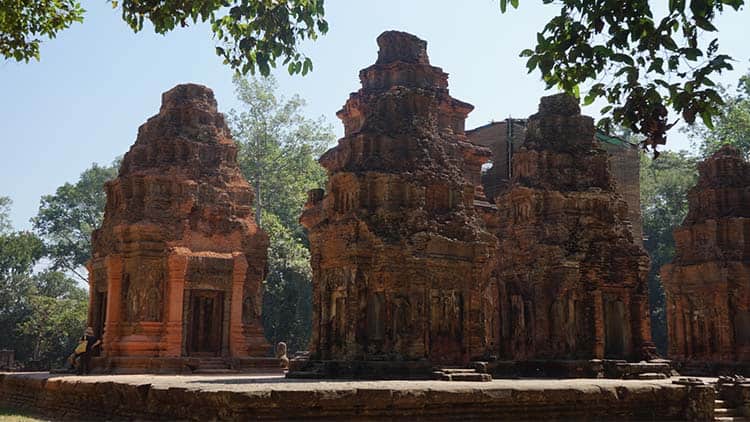
Overview: Part of the Roluos Group, Preah Ko was one of the first temples built in the Angkor area, predating Angkor Wat by over 200 years. King Indravarman I built Preah Ko in the 9th century, dedicating it to his ancestors.
Significance: Preah Ko is an important temple in Khmer history because it set the stage for later developments in Khmer architecture. Its name, meaning “Sacred Bull,” references the temple’s association with Shiva.
Unique Features: Preah Ko’s sandstone carvings are beautifully detailed, and its six towers represent a connection to the king’s deified ancestors. Despite its significance, the temple remains relatively quiet and offers a peaceful atmosphere for exploration.
7. Sambo PreyKuk

Overview: Sambor Prei Kuk, “temple in the forest,” was the Chenla Kingdom’s capital (late 6th-9th century) with approximately 100 brick temples in a forest.
Significance: This pre-Angkorian site is crucial to understanding early Khmer architecture and art, as its style influenced later designs. Chenla Kingdom inscriptions are revealed here. In 2017, UNESCO acknowledged it.
Unique Features: The temple complex has early brick architecture with elaborate carvings on the brick, including false doors and lintels. Compared to Angkorian architecture, octagonal temples are rare. Its natural forest environment is outstanding.
8. Banteay Srie Temple

Overview: Located near the southern gate of Angkor Thom, Baksei Chamkrong is an early pyramid-style temple dating back to the 10th century.
Significance: The temple was one of the first built to house royal ashes, making it a significant site in Khmer funerary practices. Its design also marks a transition in Khmer architectural style.
Unique Features: Baksei Chamkrong’s pyramid shape and relatively compact size make it unique among Angkor’s temples. The lack of crowds allows for quiet contemplation and exploration of its intricate carvings.
Planning to visit Banteay Srie? Learn more Banteay Srie temple guide in Siem Reap ,Cambodia.
9. Pre-Rup
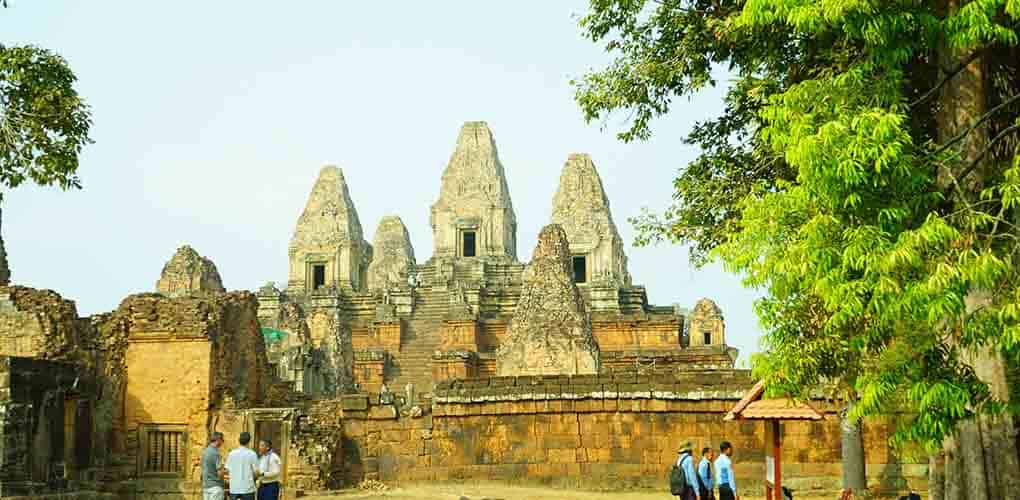
Overview: Due to its location slightly off the main tourist trail, people often overlook Pre Rup, a large temple mountain. Built in the 10th century, it served as a state temple and possibly a royal crematorium.
Significance: Pre Rup’s design and use of laterite, combined with sandstone, reflect the architectural transition of the time. Royal funerary rites likely utilized it, enhancing its historical significance.
Unique Features: Pre Rup offers some of the best sunset views in Angkor, with its high vantage point overlooking the surrounding jungle. The detailed carvings and sense of solitude make it a rewarding visit.
Planning to visit Pre Rup? Learn more Pre Rup temple guide in Siem Reap ,Cambodia.
10. Phnom Krom
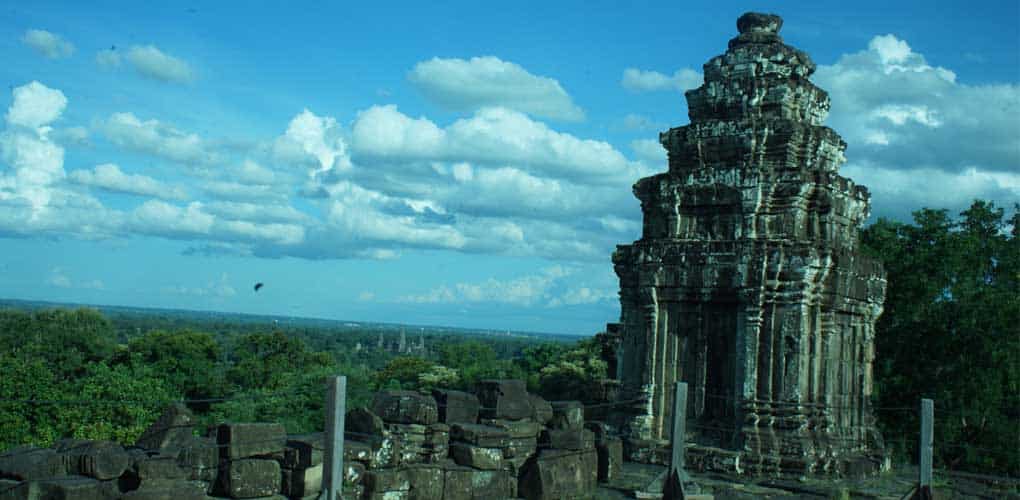
King Yasovarman I constructed Phnom Krom, a hilltop temple, in the late 9th century. Located just outside Siem Reap, it offers stunning views over Tonle Sap Lake.
Significance: As one of three hilltop temples built by Yasovarman I, Phnom Krom served both religious and strategic defensive purposes. Its remote location adds to its allure for adventurous visitors.
Unique Features: Enjoy panoramic views of the Cambodian countryside and the lake as you climb to Phnom Krom. The temple itself, while small, offers a unique combination of natural beauty and ancient architecture.
How to Get to Angkor Wat and the Temples of Angkor

To get to Angkor Complex and the temples of Angkor, travelers typically start their journey from Siem Reap. Siem Reap International Airport (SAI) has direct flights from various locations, making it a convenient entry point. Upon arrival, visitors should arrange for a private taxi in advance rather than relying solely on tuk-tuks, which are popular but can be less comfortable for longer journeys. Booking a private tour through a reputable operator can ensure a smooth and well-organized visit to the temple complex.
Once in Siem Reap, it is advisable to purchase a temple pass, which allows access to the various temples within the Angkor Archaeological Park. The most common pass options are one-day, three-day, and seven-day tickets.
Our Angkor Temple recommendation

Here’s our recommended Siem Reap tour guide to help you plan the perfect number of days for your trip to Angkor Wat, Cambodia. This itinerary is thoughtfully designed for both temple enthusiasts and those interested in eco-tours or nature excursions.
Final Thoughts
The hidden gems of Angkor offer an escape from the crowded main temples and provide a deeper understanding of Khmer history and architecture. From early mountain temples to serene jungle sanctuaries, these lesser-known sites are just as rich in historical significance as their more popular counterparts. Exploring these quieter spots allows visitors to experience the magic of Angkor in a more personal, peaceful way. Whether you’re a history enthusiast or simply seeking a unique adventure, the top 10 least visited temples of Angkor Wat are must-see destinations that promise an enriching and memorable journey.
Create your own tour, you can reserve your trip the way you want it. There are no extra fees or hidden costs.
My name is Rain. I have over 12 years of experience as a local personalized tour guide specializing in private Angkor Wat tours and organizing tours tailored to specific interests in temples and cultural experiences in Siem Reap, Phnom Penh, Battambang, and beyond.
I love traveling and sharing my personal travel experiences through written articles to help others before they make their bookings.
You are considering a trip to Cambodia, are you? Check out some of the travel advice that I have derived from my own personal experiences.
Best Holiday Packages to Cambodia 2025 – Top Tours & Deals
Get the lowdown on the greatest Cambodia vacation packages for 2025, including recommended tours, private itineraries,...
Guide To Ta Prohm Temple: A Must-Visit Temple
Check out Ta Prohm Temple, the iconic ‘Tomb Raider’ site in Siem Reap, to discover why...